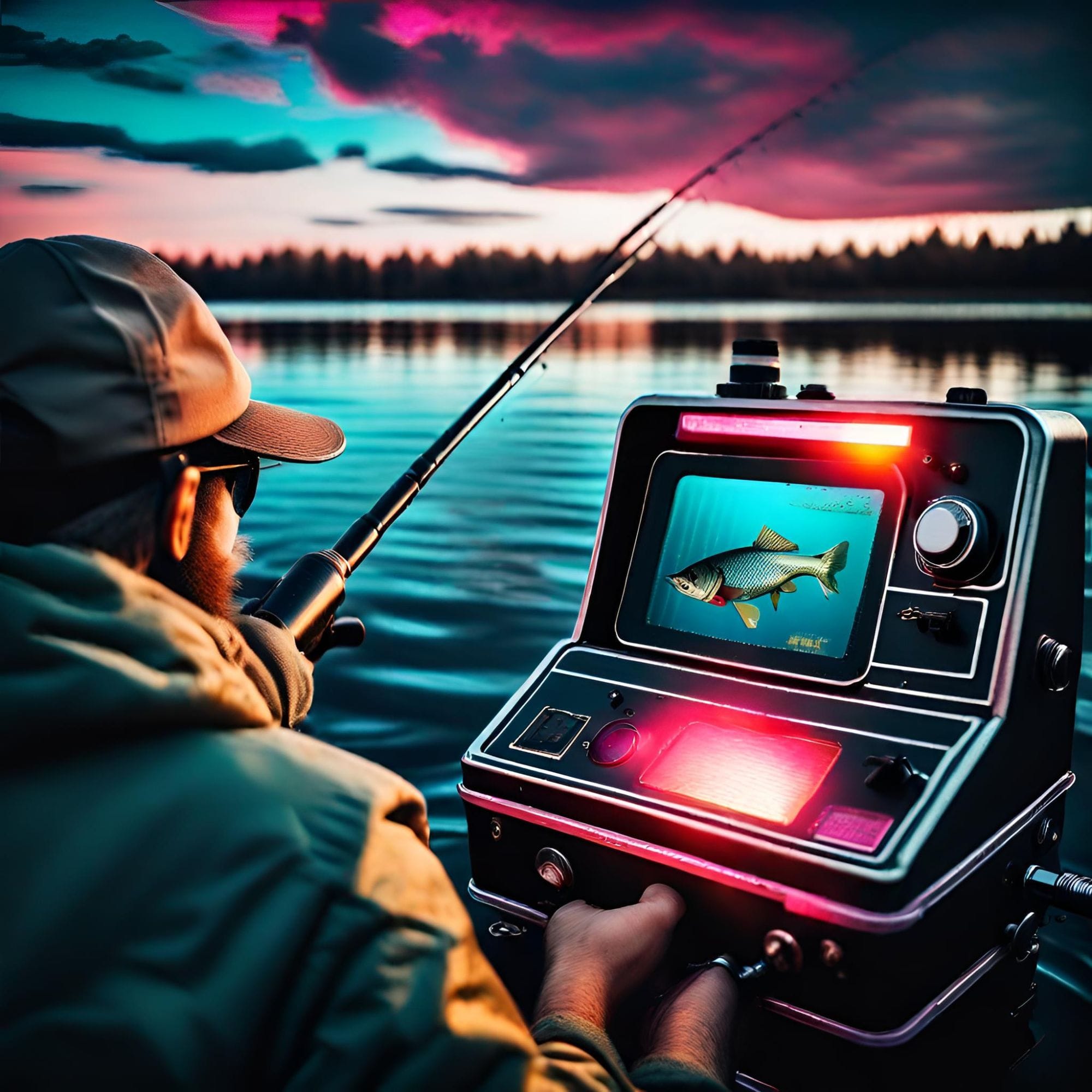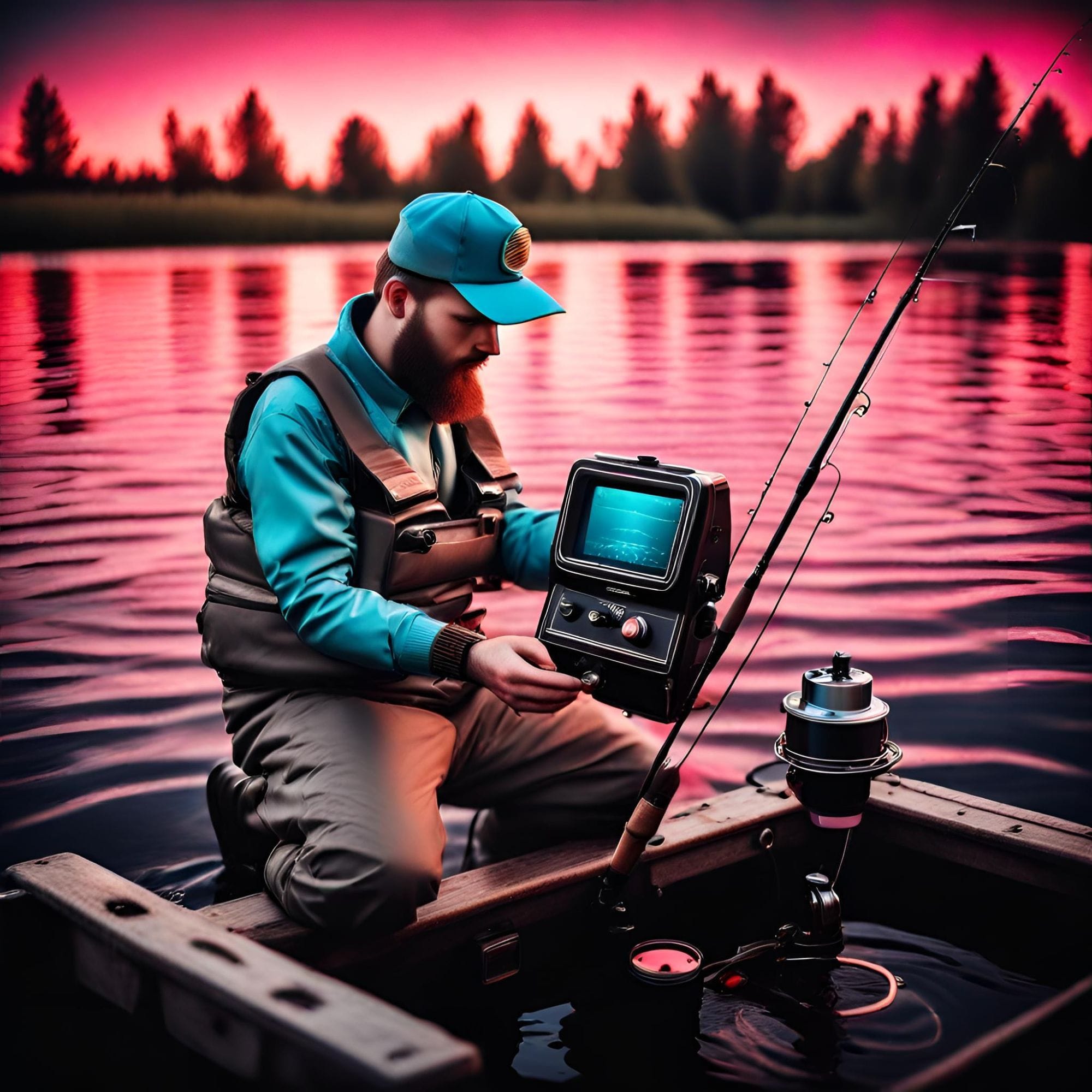Mastering the Art of Successful Fishing: Unlocking the Potential of Fish Finders










buymeacoffee.com coming soon..
Introduction
Fishing has always been a beloved pastime for many, but in today's fast-paced world, efficiency and productivity have become key factors in our pursuit of this age-old activity. This is where fish finders come into play. These innovative devices have revolutionized the fishing experience, allowing anglers to locate fish with precision and maximize their chances of success.
In this article, we will explore the world of fish finders and delve into the various techniques that can help you become a more successful and productive angler. Whether you're a seasoned fisherman looking to up your game or a beginner eager to learn, this guide will provide you with the knowledge and tools to make the most out of your fishing trips.
Understanding Fish Finders
How Fish Finders Work
Fish finders are electronic devices that use sonar technology to locate fish underwater. They work by emitting sound waves or pulses of sound energy into the water. These sound waves then bounce off objects, such as fish or the bottom of the water body, and return to the fish finder as echoes. The fish finder analyzes these echoes and displays them on a screen, providing valuable information about what lies beneath the surface.
The sonar technology used in fish finders operates on the principle of sound waves traveling at different speeds through different mediums. When sound waves encounter objects in the water, such as fish or vegetation, they bounce back to the fish finder, creating an echo. The time it takes for the echo to return to the fish finder is measured, and this data is used to calculate the distance between the fish finder and the object.
Different Types of Fish Finders
Fish finders come in a variety of types and models, each offering different features and capabilities. The two most common types are standalone fish finders and combo units.
- Standalone Fish Finders: These are dedicated devices solely designed for fish finding. They typically consist of a display screen, a transducer, and a control unit. Standalone fish finders are often portable and can be easily mounted on boats or kayaks.
- Combo Units: These fish finders combine the functionality of a fish finder with other features, such as GPS navigation, chart plotting, and mapping. Combo units are more versatile and provide a comprehensive solution for anglers who want multiple functionalities in a single device.
Key Features to Consider
When choosing a fish finder, there are several key features to consider that will enhance your fishing experience and increase your chances of success.
- Display Quality: A high-resolution display with good color contrast will allow you to see the details of the underwater environment more clearly, making it easier to identify fish and other underwater structures.
- Transducer Type: The transducer is a crucial component of a fish finder as it sends and receives the sonar signals. There are different types of transducers, such as single-frequency and dual-frequency. Dual-frequency transducers provide better depth penetration and target separation, while single-frequency transducers are more suitable for shallow waters.
- Depth Capability: The depth capability of a fish finder is an essential consideration, especially if you fish in deep waters. Make sure to choose a fish finder that can accurately display the depth range you typically fish in.
- GPS and Mapping: Having GPS and mapping functions on your fish finder can greatly enhance your fishing experience. These features allow you to mark waypoints, track your routes, and create detailed maps of your fishing spots, making it easier to navigate and locate productive fishing areas.
Using a Fish Finder Effectively
Choosing the Right Location
In order to make the most of your fish finder, it's crucial to choose the right location for your fishing expedition. While fish finders are powerful tools, they are only as effective as the environment in which they are used. Here are a few key considerations when selecting a fishing spot:
- Water Depth: Different fish species have different depth preferences. It's important to understand the depth range at which your target fish species are most likely to be found. Adjust the depth range on your fish finder accordingly to ensure you are scanning the right areas.
- Structure: Fish are often attracted to underwater structures such as reefs, drop-offs, submerged vegetation, or sunken objects. These structures provide shelter and food sources for fish. Use your fish finder to locate these structures and focus your fishing efforts in those areas.
- Temperature and Oxygen Levels: Fish are highly sensitive to changes in water temperature and oxygen levels. Most fish finders are equipped with temperature sensors that can help you identify areas with optimal conditions for the fish you are targeting. Look for temperature changes or thermoclines, which are areas where water temperatures rapidly change, as they can attract fish. Additionally, pay attention to oxygen levels, as fish tend to congregate in areas with higher oxygen concentrations.
Interpreting Sonar Readings
Once you are in the right fishing location, it's essential to know how to interpret the sonar readings on your fish finder. Sonar technology uses sound waves to detect objects underwater and display them on the fish finder screen. Understanding these readings will help you distinguish between fish, bait, and other underwater structures. Here are a few tips for interpreting sonar readings effectively:
- Fish Arches: When fish swim through the sonar beam, they appear on the screen as arches. The size and thickness of the arch can provide an estimate of the fish's size and distance from your boat. Pay attention to the depth at which the arches appear to determine where the fish are positioned in the water column.
- Bottom Structure: The fish finder will display the bottom structure of the water body you are fishing in. It can help you identify variations in the bottom composition, such as rocks, sand, or mud. Understanding the bottom structure can be useful for locating fish-holding areas.
- Fish ID Features: Many fish finders offer a Fish ID feature that simplifies the display by replacing fish arches with fish icons. While this feature can be helpful for beginners, it is important to note that it may not always accurately distinguish between fish and other objects. It's recommended to learn how to read traditional sonar readings for a more accurate understanding.
Adjusting Fish Finder Settings
To maximize the effectiveness of your fish finder, it's crucial to adjust the settings to suit the fishing conditions and your personal preferences. Here are some key settings to consider:
- Sensitivity: Adjusting the sensitivity setting determines how much detail your fish finder will display. Higher sensitivity levels can help you detect smaller fish or subtle changes in the underwater environment, but they can also generate more noise and clutter. Finding the right balance is important to avoid false readings.
- Frequency: Fish finders operate at different frequencies, such as 50 kHz, 83 kHz, or 200 kHz. Lower frequencies are better suited for deeper waters, while higher frequencies provide better detail in shallow waters. Experiment with different frequencies to find the one that works best for your fishing conditions.
- Zoom: The zoom function allows you to focus on a specific section of the sonar display. It can be particularly useful when you want to examine a particular depth range or when fishing in areas with a lot of structure. Utilize the zoom feature to get a closer look at potential fish-holding areas.
By understanding how to choose the right location, interpret sonar readings, and adjust the settings on your fish finder, you can significantly enhance your fishing success. The next section will delve into advanced techniques that will further boost your productivity on the water.
Advanced Techniques for Productive Fishing
Identifying Fish Species
One of the key aspects of successful fishing is being able to identify the species of fish in your chosen fishing spot. This knowledge helps you understand their behavior, feeding patterns, and preferred habitat, enabling you to target them more effectively. A fish finder can be an invaluable tool in identifying fish species.
When using a fish finder, pay close attention to the sonar readings. Different species of fish have distinct sonar signatures, which can help you determine the type of fish present. Look for specific characteristics such as the size, shape, and movement patterns displayed on the fish finder's screen. With experience, you will become more proficient at identifying fish species based on these readings.
Locating Fish Hotspots
Locating fish hotspots is another advanced technique that can significantly improve your fishing success. A fish hotspot refers to an area where fish are concentrated, making it more likely to catch a significant number of fish. Fish finders can be instrumental in finding these hotspots.
When using your fish finder, look for certain features on the screen that indicate potential fish hotspots. These features may include underwater structures like submerged rocks, reefs, or submerged vegetation. Pay attention to any sudden changes in the water depth or bottom contours, as they can often attract fish. Additionally, look for baitfish schools or other signs of activity, as predatory fish are likely to be nearby.
By locating fish hotspots with the help of a fish finder, you can maximize your chances of catching more fish in a shorter amount of time.
Using GPS and Mapping Functions
Fish finders equipped with GPS and mapping functions can take your fishing experience to the next level. These advanced features allow you to mark and navigate to specific locations, making it easier to return to productive fishing spots.
When you come across a productive fishing spot or a fish hotspot, use the GPS function on your fish finder to mark the location. This way, you can easily return to the same spot in the future, ensuring a higher chance of success. Additionally, utilize the mapping function to create a detailed map of your fishing area, including any noteworthy underwater features or structures you discover.
By utilizing the GPS and mapping functions on your fish finder, you can create a personalized fishing database that will guide you to successful fishing spots time and time again.
Conclusion
In conclusion, using a fish finder can greatly enhance your fishing experience and increase your chances of success on the water. Fish finders provide valuable information about the underwater environment, allowing you to locate fish and choose the most productive fishing spots.
Throughout this article, we have explored the fundamentals of fish finders, including how they work and the different types available in the market. We have also discussed the key features to consider when choosing a fish finder, ensuring that you find the one that suits your needs and preferences.
Moreover, we have delved into the effective use of fish finders, highlighting the importance of choosing the right location and interpreting sonar readings correctly. By adjusting the settings of your fish finder, you can optimize its performance and get the most accurate readings.
Furthermore, we have uncovered advanced techniques that can take your fishing game to the next level. Identifying fish species allows you to target specific fish you are after, while locating fish hotspots ensures that you are in the right areas where fish are abundant. Utilizing the GPS and mapping functions of your fish finder enhances your ability to navigate and mark productive spots for future reference.
By incorporating these techniques and leveraging the capabilities of your fish finder, you can become a more successful and productive angler. Whether you are a seasoned fisherman or a beginner, a fish finder can be a valuable tool that can significantly improve your fishing experience.
Remember, mastering the use of a fish finder takes practice and patience. Spend time on the water experimenting with different settings, honing your skills in interpreting sonar readings, and exploring various fishing techniques. With time, you will become proficient in utilizing your fish finder to its full potential.
So, next time you head out for a fishing trip, make sure to bring along your fish finder. Let it guide you to the best fishing spots and help you reel in your catch of a lifetime. Happy fishing!






Member discussion